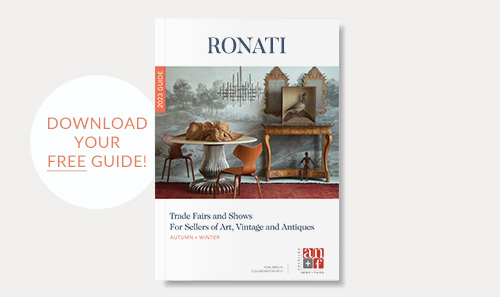Earth Day is the perfect time to appreciate antiques and vintage: their timeless beauty and charm shines even brighter when considered in the light of their sustainability. In fact, a carbon footprint comparison published by Antiques are Green showed that antique furniture is likely to have a carbon footprint one-sixteenth that of newly produced furniture.

Antique. Vintage. Retro. What Does it all Mean?
Any object that is at least 100 years old can be considered an antique.
“Vintage” refers to authentic, aged pieces in various conditions from twenty to ninety-nine years in age. These are often culturally significant – representing the style of a particular decade – and appreciated for nostalgia.
“Retro” refers to any piece that imitates a style of the past. These are often newly made, incorporating elements from a specific period and/or references to popular culture, typically from the decades of the 1950s to the 1980s.

Five Fun Facts About Antique Furniture
- Revivals have recycled furniture styles for centuries. The Gothic Revival brought 12th century design to the 19th century, and Neoclassicism brought the styles of Ancient Rome to Europe after the archeological discoveries of Pompeii and Herculaneum in 1748.
- Hidden messages were often incorporated into furniture by craftsmen: secret compartments for storing valuables, concealing contraband, or passing secret messages during times of political unrest or war.
- An apprentice would complete five to seven years of rigorous training under the guidance of a master cabinetmaker before being considered qualified as a furniture-making craftsman.
- Thomas Chippendale was the first furniture maker to have a style named after him. (Most styles are named for monarchs or movements.)
- Seventeen different native and exotic woods were commonly used in crafting furniture, including: Oak, Walnut, Mahogany, Satinwood, Rosewood, Calamander, Yew, Elm, Beech, Sycamore, Ash, Ebony, Satin Birch, Harewood, Kingwood, Tulipwood and Boxwood. Examples can be seen in this article published by Nicholas Wells.

Glamorous Recycling
Antique and vintage items have enjoyed a veritable explosion of popularity since the 1970s, and that trend is only building. An increasing number of buyers appreciate that antique and vintage pieces allow them to express their one-of-a-kind style and create highly personal spaces. Sustainability is a bonus, one that is increasingly popular among Gen Z and millennials, as described in Forbes magazine.
Michael Diaz Griffiths tells the story of a new generation of collectors, The Modern Antiquarians, fueled in their passion for collecting by a love of beautiful objects and their stories, with eclecticism as their common thread. They seem to represent a new viewpoint for a new era, where the artistry and craftsmanship of the past can be celebrated in a completely fresh way.
Many notable interior designers have leaned into the beauty of antiques and extol their ability to both anchor and elevate a room including Martyn Lawrence Bullard, Corey Damen Jenkins, Michelle Workman, and Alexa Hampton. Noz Nozawa, known for her brilliantly colored, eclectic spaces, sat down with designer Alexa Hampton for her series 52 Weeks of Design where they spoke about how her own personal style influences the way she shops for home furnishings. Rather than adhering to a single design style, these designers’ work follows a similar thread: a mix of old and new to imbue a sense of uniqueness and history creates spaces that tell the unique stories of their owners.
The beauty of antiques and vintage pieces is that they inherently help us consume less, thereby preserving the environment and our planet. No trees need to be cut down or water wasted when one is purchasing antique and vintage items! And antiques were often created with green practices: tools were hand-operated, glues and dyes were produced from natural sources, and pieces were often finished with beeswax.
Don’t you love it when aesthetics and practicality pair so well? “Glamorous recycling” indeed!









Leave a Reply